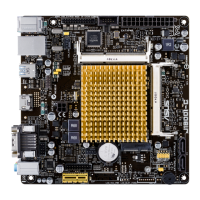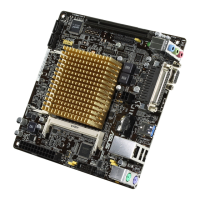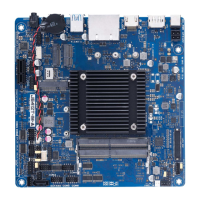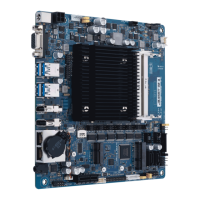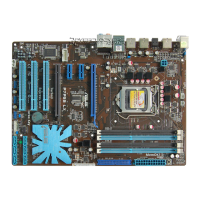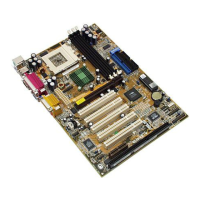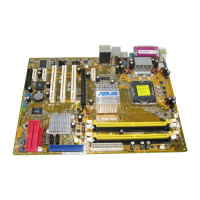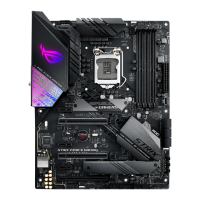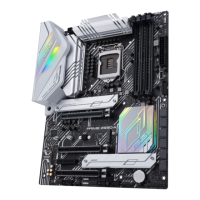Do you have a question about the Asus J1900I-C and is the answer not in the manual?
Precautions before installing components or changing settings.
Details about the onboard CPU and system memory.
Precautions for safe electrical and operational handling of the motherboard.
Summary of key component and feature details.
Procedures for managing and updating the motherboard BIOS.
How to enter and navigate the BIOS setup program.
Configuring CPU-related options like cores, prefetchers, and virtualization.
Settings for Fast Boot, USB support, PS/2, Network, and Boot Logo.
Settings for Windows Secure Boot and Key Management.
Precautions before installing components or changing settings.
Details about the onboard CPU and system memory.
Precautions for safe electrical and operational handling of the motherboard.
Summary of key component and feature details.
Procedures for managing and updating the motherboard BIOS.
How to enter and navigate the BIOS setup program.
Configuring CPU-related options like cores, prefetchers, and virtualization.
Settings for Fast Boot, USB support, PS/2, Network, and Boot Logo.
Settings for Windows Secure Boot and Key Management.
| Non-ECC | Yes |
|---|---|
| Memory channels | Dual-channel |
| Memory slots type | SO-DIMM |
| Number of memory slots | 2 |
| Supported memory types | DDR3L-SDRAM |
| Supported memory clock speeds | 1333 MHz |
| Processor socket | BGA 1170 |
| Processor manufacturer | Intel |
| Compatible processor series | Intel® Celeron® |
| Maximum number of SMP processors | 1 |
| USB 2.0 connectors | 3 |
| USB 3.2 Gen 1 (3.1 Gen 1) connectors | 0 |
| Supported storage drive interfaces | SATA II |
| USB 2.0 ports quantity | 4 |
| LAN controller | Realtek RTL8111G |
| Ethernet interface type | Fast Ethernet, Gigabit Ethernet |
| Audio chip | Realtek ALC887 |
| Cooling type | Passive |
| Component for | PC |
| Power source type | ATX |
| Motherboard chipset | - |
| Audio output channels | 7.1 channels |
| Motherboard form factor | mini ITX |
| Windows operating systems supported | Windows 7 Home Basic, Windows 7 Home Basic x64, Windows 7 Home Premium, Windows 7 Home Premium x64, Windows 7 Professional, Windows 7 Professional x64, Windows 7 Starter, Windows 7 Starter x64, Windows 7 Ultimate, Windows 7 Ultimate x64, Windows 8, Windows 8 Enterprise, Windows 8 Enterprise x64, Windows 8 Pro, Windows 8 Pro x64, Windows 8 x64, Windows 8.1, Windows 8.1 Enterprise, Windows 8.1 Enterprise x64, Windows 8.1 Pro, Windows 8.1 Pro x64, Windows 8.1 x64 |
| Graphics card | HD Graphics |
| DirectX version | 11 |
| Maximum resolution | 2560 x 1600 pixels |
| Maximum graphics card memory | 512 MB |
| Parallel processing technology support | Not supported |
| BIOS type | UEFI AMI |
| ACPI version | 2.0a |
| BIOS memory size | 64 Mbit |
| Bundled software | ASUS Utilities\\r EZ Update\\r Anti-virus software (OEM version) |
| Width | 170 mm |
|---|
